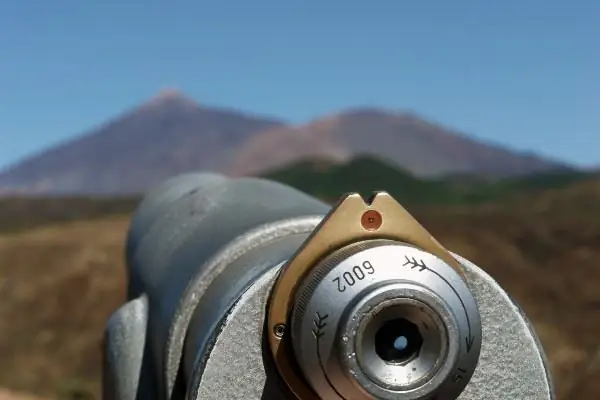A spyglass is an optical device with which you can observe distant objects. To choose a high-quality specimen, you need to have an idea of the parameters and technical characteristics inherent in pipes.

Instructions
Step 1
The tubes for daytime observation have an exit pupil of 3-4 millimeters, the tubes of the so-called twilight vision are equipped with a pupil, the size of which ranges from 3 to 7 millimeters. No matter how the seller convinces you, know that a spyglass provides an opportunity to observe objects during twilight or in low light conditions. For observations at night, special night vision devices are intended.
Step 2
Choose those models whose exit pupil size is as close as possible to the size of your pupil: in the daytime it has a size of 2-3 millimeters, at night - 6-8 millimeters. To determine the exit pupil size, divide the objective diameter by the tube magnification. These indicators should be indicated on its body. For example, the inscription 8x30 means that the tube has a magnification of 8 times, and the diameter of its lens is 30mm.
Step 3
Pay attention to your reflection in the telescope lens: if a high-quality antireflection coating was used in the manufacture of the device, the reflection will not be entirely clear. The color of the coating itself does not matter. Check if the entire surface is evenly coated. To do this, stand with your back to the bright light and point the pipe lens at it. If you shake it in different directions, you will see images of the light source in different colors. There should be no white among them.
Step 4
Think about how much magnification you need to observe. When purchasing a device with a magnification greater than 10-12 times, purchase an additional tripod. It will be especially difficult to use a telescope with a high magnification without a special support at night. Select several fixtures and compare them with each other. If the size of the room allows, observe the surroundings through a pipe. If you use an inadequate pipe, you will see colored edges around objects, blurring and fuzzy images, and low contrast between light and dark objects.
Step 5
Try the pipe at home. Defects that are invisible in daylight can be detected at night. Look at the stars through a telescope: they should look like dots without halos, surrounded by glowing rays. The distortion that occurs when the pipe is moved from the center to the edge should not be large. Listen to your feelings: when using the optical device for a long time, you should not experience fatigue and inconvenience.






